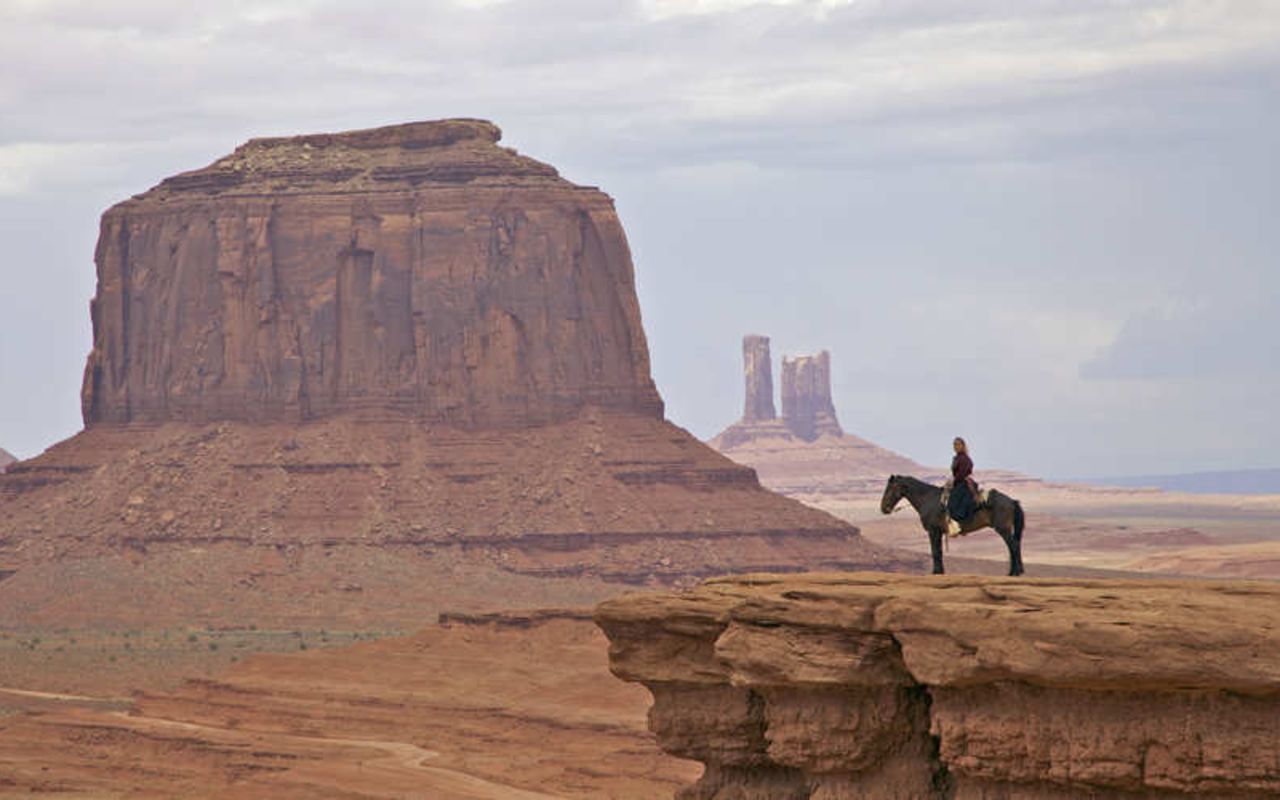Navajo People
Navajo legend tells us that the Dineh had to pass through three different worlds before emerging into the present world-the Fourth World or Glittering World. So, the Holy People put four sacred mountains in four different directions: Mt. Blanca in the east, Mt. Taylor in the south, San Francisco Peaks in the west, and Mt. Hesperus in the north, thus creating the boundaries of Navajoland.
Centuries ago, the Navajo people were taught by the Holy People to live in harmony with Mother Earth and how to conduct their many activities of everyday life. The Dineh believe there are two classes of beings: the Earth People and the Holy People. The Earth People are ordinary mortals, while the Holy People are spiritual beings that cannot be seen. Holy People are believed to have the power to aid or harm Earth People.
When disorder evolves in a Navajo's life, such as illness; herbs, medicinemen (diagnosticians), prayers, songs and ceremonies are used to help cure the ailment. Some tribal members prefer modern day hospitals on the Navajo Reservation; some seek the assistance of a traditional Navajo medicine man, some combine both methods. Navajos believe that a medicine man is a uniquely qualified individual bestowed with supernatural powers to diagnose a person's problem and to heal or cure illnesses.
The Dineh believe they are sustained as a nation because of their enduring faith in the Great Spirit. And because of their strong spirituality, the Navajo people believe they will continue to survive as an Indian nation forever.
Food
For generations, traditional Navajo dishes have been handed down from grandmother to mother to daughter without being written down. Besides being a basic necessity of life food welcomes visitors and expresses thanks.
Traditional Navajos usually cook by memory, measuring their ingredients with hands or fingers. If there is no modern stove, most food is cooked over an open fire.
Traditional cooks still use wild plants and vegetables such as spinach, onions, turnips, berries, cactus and cedar brush. For instance, cedar brush is used to add color, a flavor to a popular Navajo delight called blue corn meal pudding.
Traditional Dress
Many Navajos continue to wear traditional clothing daily. Others wear their velvet, turquoise and silver only during ceremonial or social gatherings.
The Navajo woman's traditional style of dress consists usually of foot or knee-high moccasins, a pleated velvet or cotton skirt, a matching long-sleeve blouse, concho and/or sash belt, jewelry and a shawl. Men also wear jewelry, moccasins and preferably a velveteen shirt.
Although many Navajo people wear contemporary clothing, they continue to carry on their cultural practices by wearing traditional outfits when the occasion requires it. It is believed that before an individual can receive help from the Great Spirit, one must first wear appropriate clothing in order to be recognized.
Language
The Navajo people are very dynamic and creative people who strongly believe in the power of the mind to think and create; finding expression in the myriad symbolic creations of the Navajo language, art and ritual ceremonies.
The Navajo language embodies a high prevalence of humor in day to day conversation. Humor transforms difficult and frustrating circumstances into bearable and even pleasant situations.
The strong emphasis and value Navajos place on humor is evidenced in the First Laugh rite. The first time a Navajo child laughs out loud is a time for honor and celebration.
Aside from being the mother tongue of the Navajo Nation, the Navajo language also has played a highly significant role in helping the entire nation. During World War II, the Navajo language was used as a code to confuse the enemy.
Navajo bravery and patriotism is unequaled. Navajos were inducted and trained in the U.S. Marine Corps to become "code talkers" on the frontline. Shrouded in secrecy at the time, these men are known today as the famed Navajo Code Talkers. The Navajo language, scrambled by the Code Talkers, proved to be the only code that could not be broken during World War II. Although not all tribal members speak the language fluently, most Navajos have a deep respect for it.
